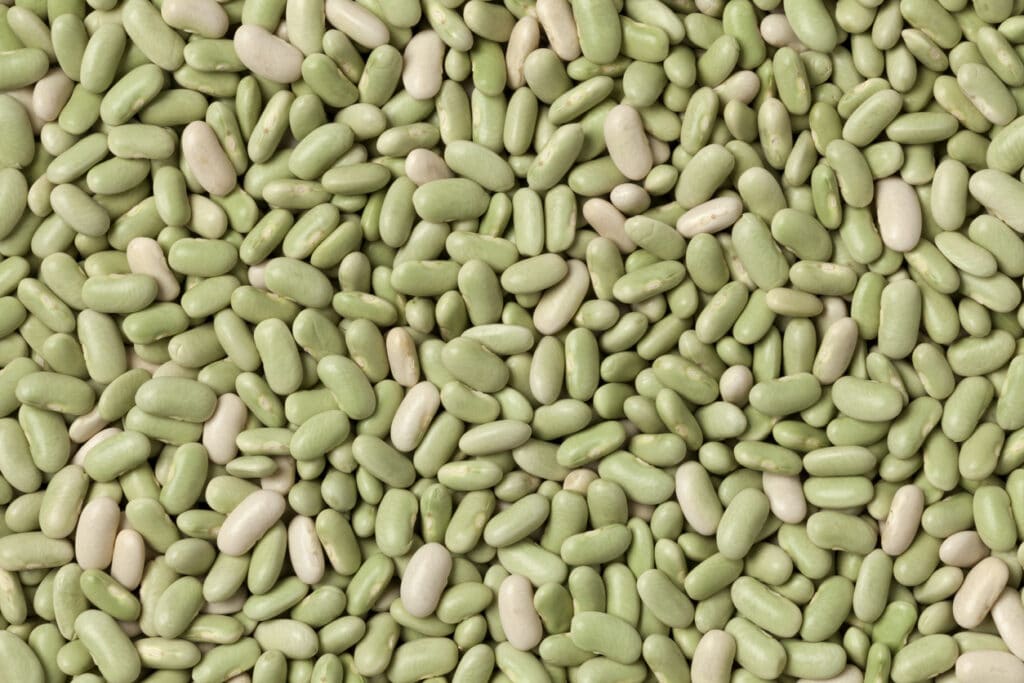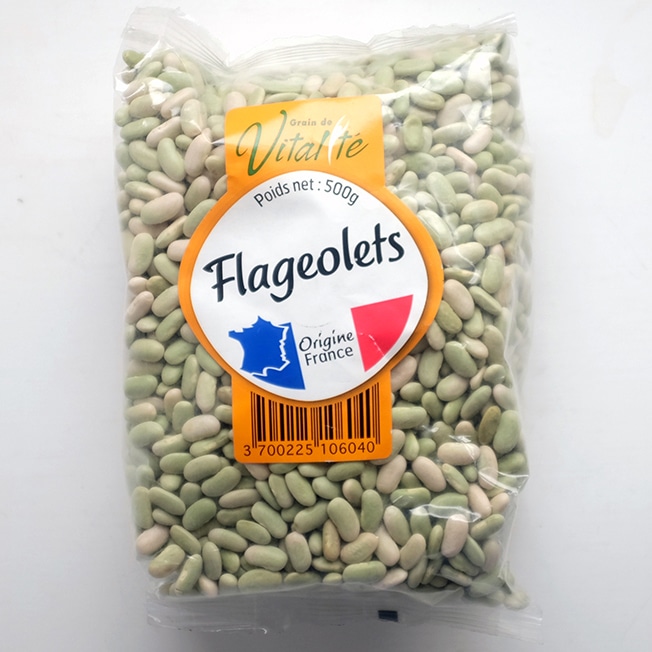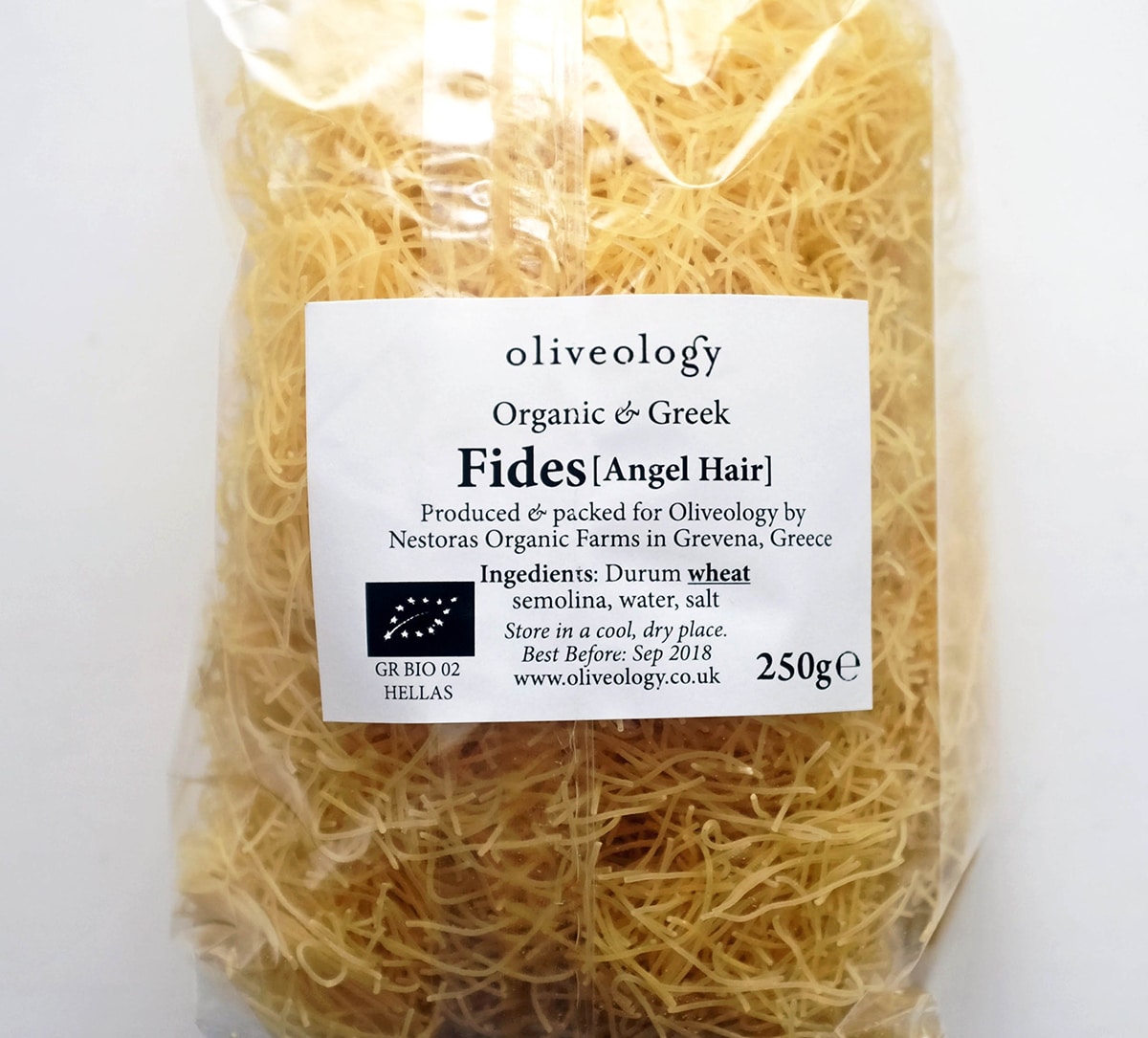Cupboard love: dried flageolet beans
Ed Smith on why dried flageolet beans are an essential component of his kitchen cupboard


“DRIED BEANS ARE NO GOOD FOR A LAST-MINUTE FORAGE, BUT THEY CAN INSPIRE WHOLE MEALS TO BE BUILT AROUND THEM”
When I moved into my then-girlfriend, now-wife’s flat, I brought with me just two bags of clothes. Oh, plus multiple boxes of cookbooks and kitchen utensils, tonnes of crockery (“just in case I start a restaurant”) and a similar weight of dry larder items. Most of my chattels (edible or otherwise) duplicated things she had already. And there was barely any room for the additional bits until more shelves were put up, or gaps found underneath beds. Let’s just say the beginning of our new chapter was a little fraught.
Kitchen cupboard space was (and is) especially limited. Certainly, there was no obvious place for my eight different types of dried beans, seven of rice, three of lentils, fine polenta, rough polenta, spelt, wheat grains – you get the idea. The solution was to buy a batch load of Kilner jars, fill them with said ingredients, place on top of the cupboards and, well, neglect them.

Dried beans are no good for spontaneous cooking, are they? The need to soak them for multiple hours before simmering for a couple more removes them from midweek “what’s in the fridge?” territory. As a result, these staples are constantly glaring at me as I reach, once again, for something much quicker to cook, like pasta or noodles. But their visibility does from time to time prompt a necessary flip of the menu-planning process: yes, they’re no good for a last-minute forage, but they can inspire whole meals to be built around them.
Butter beans push me to poached chicken broths laced with kale or charred courgettes; cannellini beans are cooked as a sloppy side with garlic and sage, sometimes puréed, always excellent with pork; and the pale green, thin-skinned flageolet beans from Le Marché du Quartier prompt me to braise lamb, every time.
Is it the viridescence of flageolets that does it? Does that make me think of grass, mint sauce and other green things suggestive of sheep? Suffice to say that the delicate taste and texture of this particular pulse both suits and soaks up rich, fatty lamb juices.
Flageolet beans are immature haricot beans, harvested before they’re ripe and dried in the shade to maintain their green tint. Theoretically, they can be used more off the cuff than other dried beans – their youthful shell apparently requiring only a couple of hours’ soaking in just boiled water, but I’ve found an overnight soak leads to a swifter simmer.
The same evening, I left the beans to soak, I rolled a couple of lamb breasts and braised them with onions. Next morning, I simmered the soaked pulses for two hours before heading to work. Which meant that, perhaps ironically, the final effort of portioning the meat, tumbling in a few tomatoes, and browning it all in the oven took only a brief effort and 45 more unattended minutes in the oven. Quick and simple, if not wholly spontaneous.


